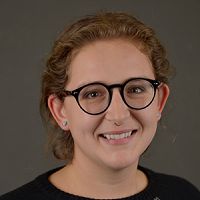Renzaglia et al., 2018
Constraints on Valley Structure from Two Seismic Refraction Lines in the Susquehanna Shale Hills Critical Zone Observatory
Joseph Renzaglia*, Natalie J Accardo, Andrew Nyblade, Susan Brantley (2018)
Abstract NS41B-0817 presented at 2018 AGU Fall Meeting, Washington, D.C., 10-14 Dec
-
Shale Hills, INVESTIGATOR
-
National, Eel, Luquillo, Shale Hills, INVESTIGATOR, COLLABORATOR
Abstract
The critical zone (CZ) represents the outermost layer of the Earth where interactions between the soil, bedrock, and organisms regulate the formation of life sustaining resources. To investigate the structure of the CZ a 3D active-source experiment was collected across the Susquehanna Shale Hills Critical Zone Observatory (SSHCZO) in Pennsylvania in June 2018. Seismic energy was generated by a single sledge hammer shot at the midpoint of each receiver. In this study, we present results from two 2D lines extracted from the 3D grid and that extend for 40 meters beyond the grid to provide greater depth penetration. Geophones were spaced at 2-3 m distance along the 2D lines. The two lines that we present here intersect in proximity of drilled and geophysically logged boreholes that provide constraints on 1D velocity structure. Line 91 extends approximately 153 meters in length, consisting of a total of 67 geophones. Line 92 extends to the length of 205 meters with a total of 81 geophones. We conducted first-arrival travel time inversions to construct models of 2D velocity (Vp) for both lines. Line 91 had raypaths extend to depths of 15 meters and line 92 to the depths of 26 meters. Velocities extracted from the models were consistent with those provided by the well log data. In agreement with standard velocity measurements for unconsolidated materials, the model shows P-wave velocities of ~300-700 m/s in the thin (< 2 m) soil layer. The two Vp models indicated a thick intermediate area from depths 10-20 meters. In comparison, there is a marked shallowing of the intermediate velocity zone (depths < 10 meters) beneath the river-filled valley that is consistent on both models.
Citation
Joseph Renzaglia*, Natalie J Accardo, Andrew Nyblade, Susan Brantley (2018): Constraints on Valley Structure from Two Seismic Refraction Lines in the Susquehanna Shale Hills Critical Zone Observatory. Abstract NS41B-0817 presented at 2018 AGU Fall Meeting, Washington, D.C., 10-14 Dec.
 This Paper/Book acknowledges NSF CZO grant support.
This Paper/Book acknowledges NSF CZO grant support.
Explore Further


